|
← Revision 16 as of 2014-11-05 02:11:57
Size: 8721
Comment:
|
← Revision 17 as of 2014-11-05 02:23:09 →
Size: 8728
Comment:
|
| Deletions are marked like this. | Additions are marked like this. |
| Line 4: | Line 4: |
|
* A session file * Static images * Interactive web applications ** CyNetShare ** Full web application ** Simple network view (for programmers) ** Web development template |
* A session file * Static images * Interactive web applications * CyNetShare * Full web application * Simple network view (for programmers) * Web development template |
Publish Your Visualizations
When you finish your data analysis and visualization, you need to publish your data to share the results. Cytoscape has several options to do it, with most options suitable for Cytoscape users and other options suitable for programmers wanting to create unusual or complex network viewers.
- A session file
- Static images
- Interactive web applications
- Full web application
- Simple network view (for programmers)
- Web development template
As Session File
The easiest way to share your results with others is simply save everything as a session file (which is a zipped session archive). You can save your current session by clicking Save Session icon. You can save to a thumb drive, a shared file system, or even a cloud drive directory such as Dropbox -- if you save to a shared drive, beware not to have two people the session file with Cytoscape at the same time, as unpredictable results may occur.
As Static Images
Cytoscape can generate publication-quality images from network views. By selecting File → Export → Network View as Graphics... you can export the current network view into the following files:
- JPG
- PNG
- PS (Post Script)
- SVG
We recommend using PDF for publications because it is a standard vector graphics format, and it is easy to edit in other applications such as Adobe Illustrator.
Known Issues
For PDF export, there is an option to Export Texts as Fonts. This option does not work for two-byte characters such as Chinese or Japanese. To avoid corrupted texts in the exported images, please uncheck this option when you publish networks including those non-English characters.
As Interactive Web Applications (New in 3.2.0)
Sharing via CyNetShare
For a quick and easy way to share your network visualizations using an interactive web viewer, you can use Cytoscape's File | Export as Cytoscape.js JSON menu to create and save a JSON-format file to a public directory (such as Dropbox). To view the network, you will need to start CyNetShare in a browser and supply the URL for your saved network file -- most public directory systems can generate a URL for a file, though the details differ from system to system. CyNetShare is similar to Google Maps in that once you have loaded your network and have tweaked its appearance to suit, you can have CyNetShare generate a new URL that you can e-mail or post as a link on your own web site. That URL will bring up CyNetShare preloaded with your network for anyone to see.
CyNetShare is documented here:
More About Interactive Web Applications

These days, the Web is an excellent platform for data sharing and collaboration. Since version 3.1.0, Cytoscape has had the Export as Cytoscape.js JSON feature for publishing your data for web applications. However, this feature is designed for developers and they have to write some code to set up their web applications to visualize JSON files with Cytoscape.js. This route provides maximum flexibility for people who have JavaScript programming experiences, but it is not for end-users. To deliver the versatility of web based visualizations, we have developed a new export option, Export as Interactive Web Visualization, which creates a complete web based visualization from your Cytoscape session.
What is an Interactive Web Visualization?
Our definition of interactive web visualization is a browser-based, complete web application that visualizes user data similarly to the desktop version of Cytoscape. To accomplish this goal, we use Cytoscape.js and other web technologies to visualize as much information as possible from the original Cytoscape network views. The Export as Interactive Web Visualization function simply compresses a web application and network data (including your network/table JSON files, visual styles, and template HTML/JavaScript/CSS files) into a zipped archive. To publish this as a complete web application, you just need to unzip your archive to a folder on your PC or web server -- no programming required.
There are two export options: Full and Simple.
Here is a network in Cytoscape:
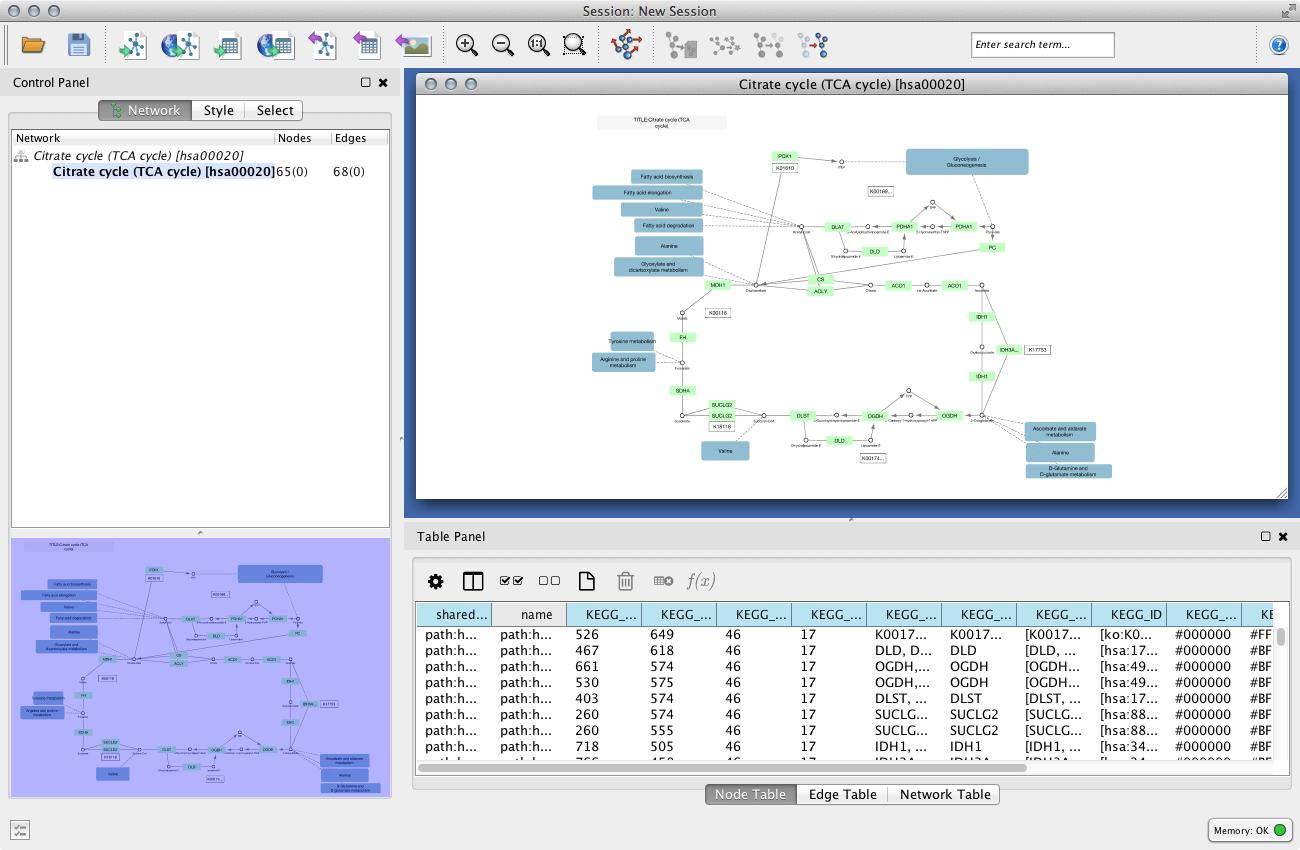
Here is the same network as an interactive web visualization:
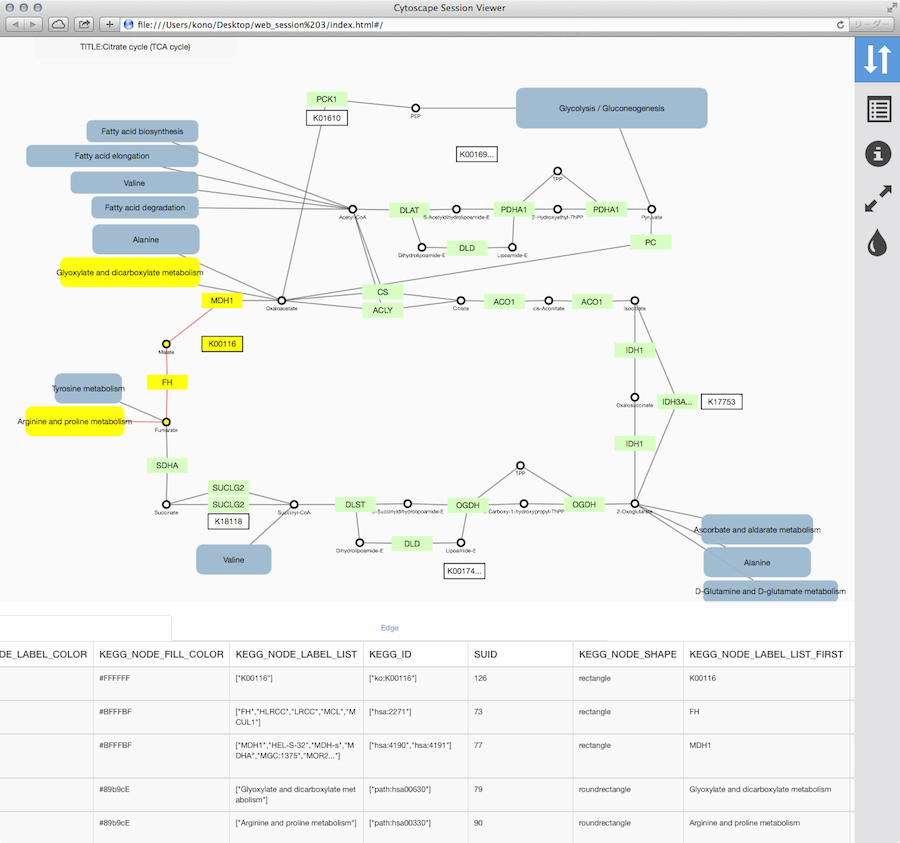
Full Web Application
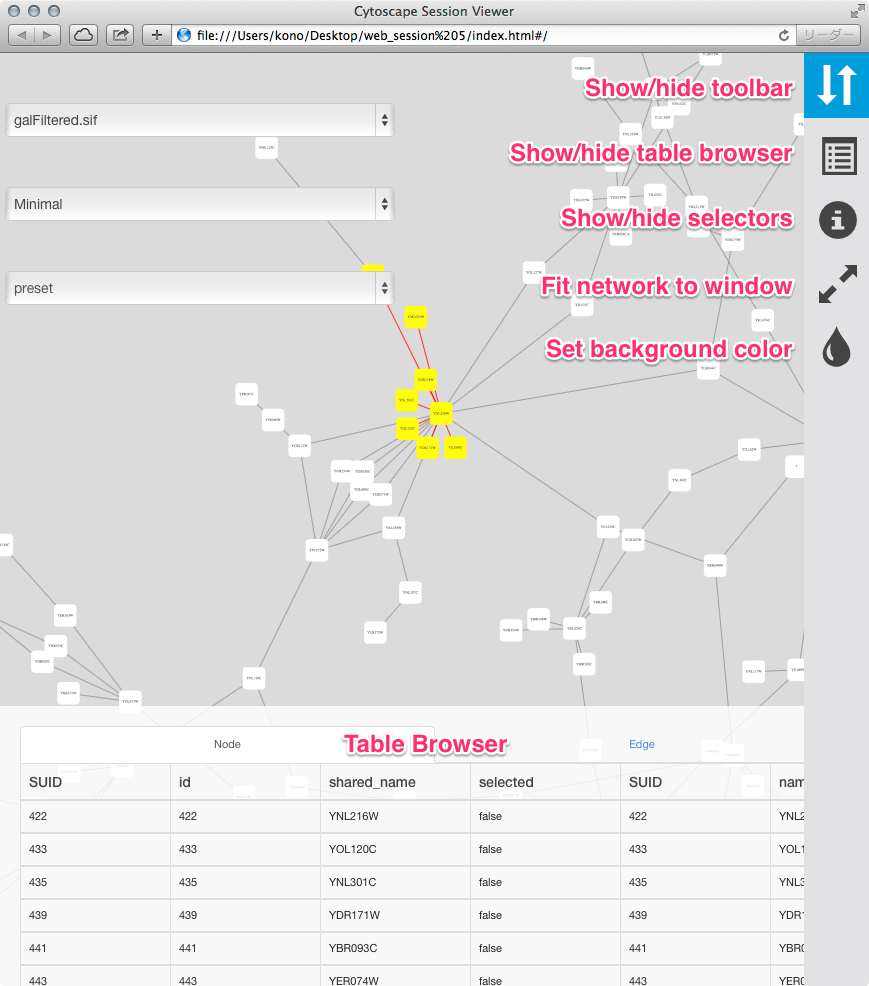
The 'Full' export option is designed for users who want to publish their data as a complete single-page application. The zip archive contains a complete web application that works as a basic viewer for Cytoscape-generated network visualizations on web browsers. Since it is a pure JavaScript application, you can run it on browsers on both PCs and tablets. Once you export the zipped archive, you can unzip it onto a web server (or your PC) and use a browser view the network interactively by opening the unzipped file.
Simple Network View
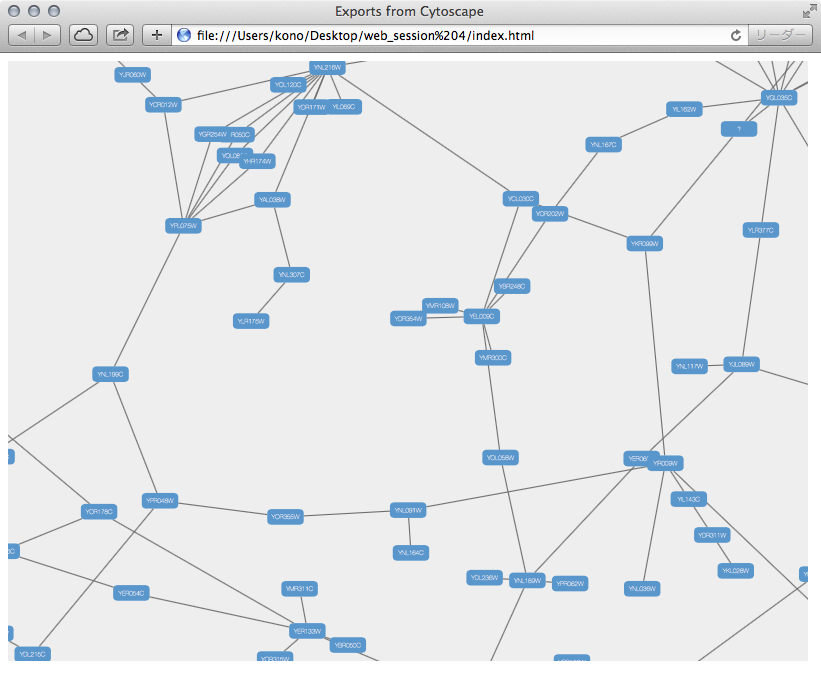
The 'Simple' export option saves the current network view as a single network view with Cytoscape.js. The purpose of this option is providing a simple boilerplate code for web application developers who want to create custom web applications using Cytoscape.js.
How to Use Exported Archive
Both types of exported archives are simple HTML pages. You can start by unzipping the archive into a folder on your PC or web server. The folder will contain an index.html file, the network data, and other files. You can open the index.html file in your browser (usually from your browser's File | Open menu item.)
Depending on your browser's security settings, you may not be able to open the index.html file directly -- you may have to have a web server running. An easy way to setup a local web server is by running Python simple HTTP server. If you have Python installed on your machine, just go into the web archive folder and type:
python -m SimpleHTTPServer 8000
and use your browser to open:
http://localhost:8000/
Of course, if you unzip your archive to a folder on a public web server, everyone can access your visualizations from their own web browsers.
Here is an example exported file from Cytoscape:
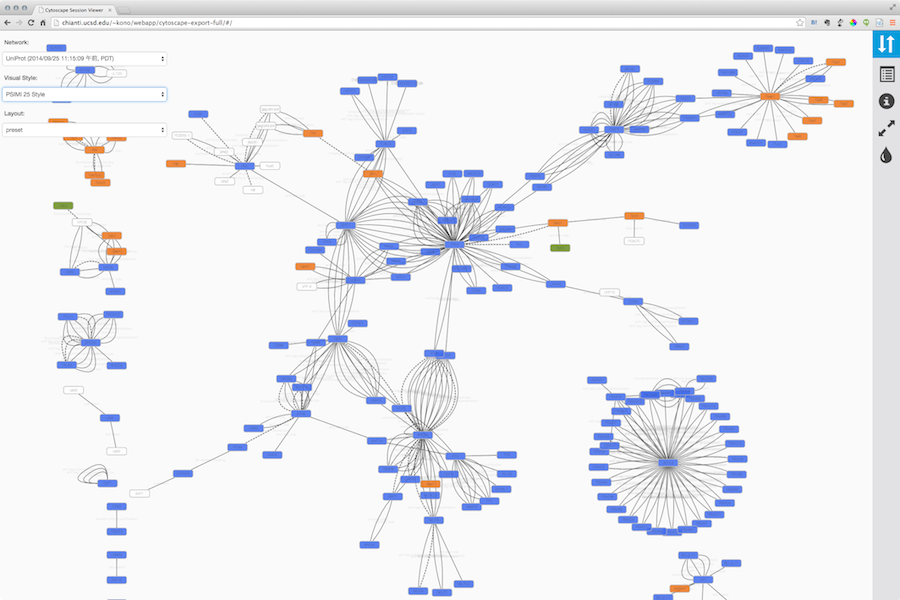
Compatibility
Because we use latest HTML5 based web technologies, we cannot support old web browsers like IE. We strongly recommend to use latest version of modern web browsers such as Google Chrome, Mozilla Firefox, or Apple Safari.
Customize Export Template (For Web Application Developers)
This export option creates a minimalistic web application to visualize your network on web browsers. But in some use cases, you may want to use your own page design or add new features to the application. If you are a web application developer, it is possible to create your custom export template by editing resource files in your configuration directory. The HTML5 template code is stored in ~/CytoscapeConfiguration/web directory:
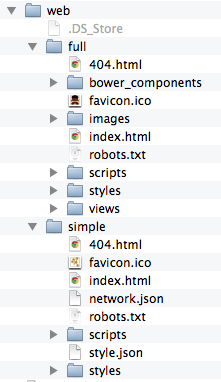
In this folder, you can find simple and full sub directories. These are the templates for each export options.
Requirements
To build these project, you need the following tools installed:
- Node.js
- gulp
- grunt
Simple Export Template
This template is generated by a simple gulp project. The source code is available here:
To build the project into dist directory, type:
gulp
Full Export Template
This is an AngularJS based web application built with grunt (at least for now -- We have plan to migrate to gulp). Source code and more documentations are available here:
* https://github.com/idekerlab/cyjs-full-export
To build the project into dist directory, type:
grunt
Use Your Custom Templates for Export
Once you have your own builds, you can deploy your templates by replacing the contents of simple and full with your own builds.